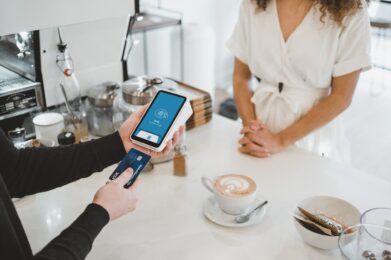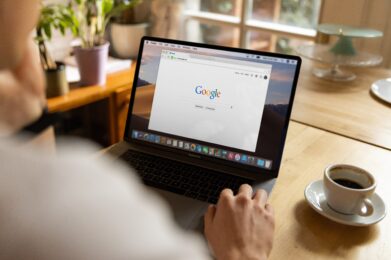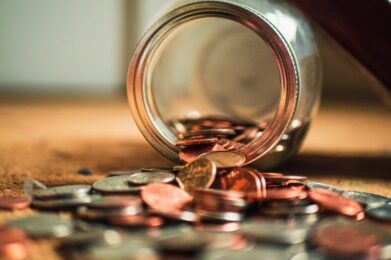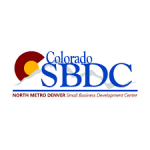By John Hovey, North Metro SBDC Special Projects Coordinator
In October 2001, the Public Entity Risk Institute published a thorough study of how natural disasters affect small businesses. The study was conducted by University of Wisconsin-Green Bay researchers Daniel J. Alesch, James N. Holly, Elliott Mittler, and Robert Nagy and titled, quite straightforwardly, Organizations at Risk: What Happens When Small Businesses and Not-for-Profits Encounter Natural Disasters. They found that in the wake of fires, floods, earthquakes, or other natural disasters, there are common patterns of small business behaviors that might shed some light on what the COVID disaster recovery will look like, and how to avoid the worst outcomes. The Organizations at Risk study found, unsurprisingly, that small businesses are often casualties of natural disasters. Almost all businesses close for some time, and many of them never reopen their doors. Of those that do reopen, not all regain profitability. Whether or not you consider COVID to be a natural disaster, in this post I will look at the conclusions from the Organizations at Risk to see what we might learn as we recover from what is certainly an unprecedented disruption of small business.
Other things being equal, we found that organizations that were smaller, weaker, and under significant stress before the event were much more likely not to reopen their doors after the event. Marginal firms and those tottering on the brink of failure often tumbled when the event struck, even if they suffered only peripheral damage. Sometimes the disaster was simply the straw that broke the camel’s back. It afforded them a good excuse to give up a losing battle, presumably because the organization would, in any circumstance, have no staying power during the long, difficult weeks that follow the event.
This statement from Organizations at Risk makes sense, even if it raises a painful point while we are in the midst of a recovery. Being a strong business in the first place gives an advantage in recovering from the shock of an unexpected closure. In our COVID comparison, this will probably hold true as well. Since almost all small businesses experienced some disruption, and many experienced outright closure, those with stronger financials and reserves of supplies, talent, and customers are now in a better position to survive. “Too late now!” you might be thinking, but it’s worth noting that disasters do end and that at some future point it will be the small business owner’s responsibility to prepare for future, unexpected disasters and to strengthen their businesses accordingly. The US Chamber of Commerce Foundation has published a pre-disaster plan for small businesses to help with this.
Many business people who had marginal enterprises before the natural hazard event did reopen and hang on through long, painful recovery periods, only to exhaust their hope, their resources, and their endurance and, finally, give up the struggle. Even strong firms can suffer badly from natural hazard events. Being out of business for any extended period of time can lead to a loss of market share. Even with business interruption and property and casualty insurance, it can be extremely difficult to regain market share.
The Organizations at Risk study found that a lot of small businesses opened after disasters, only to lose money for extended periods of time, sometimes two or more years! The researchers found that some of the business owners opened simply because they had no other ideas, nothing better to do, and that they could neither change their business practices nor conceive of closing their businesses—that they tried to just pretend that things were the same as before the disaster and carry on as normal.
The lesson here is clear. If your business is not profitable, you have hard choices to make and you cannot ignore them. You must either change your business and make it work, or you are better off closing it and trying something else than losing money for years at a model that just won’t work anymore.
The business owner’s experience base and perceived competencies seem to be the guiding forces during the early post-disaster recovery stages. Owners and operators are constrained by a complex personal and social image of what they are and what they can do. The ones who are successful are those who take positive action to improve their business potential. Long-term survivors told us, “You can’t look back. You have to keep looking to the future.”
An entrepreneurial mindset is crucial. You cannot rest on past successes, especially after a disaster. You must look for the next opportunity, stay nimble, and move forward.
We have coined another term – managerial mitigation – to describe management techniques employed to reduce both exposure and vulnerability through smart business practices. These techniques extend to include diversifying the organization’s customer base, diversifying the location of the organization’s inventory, protecting organizational electronic and hard copy data, and having multiple business outlets. Multiple business outlets include having several geographic locations or doing business by catalog or through e-commerce. Managerial mitigation practices include things as simple as having sensible lease provisions – provisions that allow an organization to move out from a building if it fails to meet necessary performance characteristics and the owner cannot bring it back promptly.
“Pivot” is the current buzzword to describe what the researchers call “managerial mitigation” in their 2001 study, and opportunities for online commerce and delivery service have expanded tremendously since then. The small business that wants to pivot from COVID is, most likely, going to have to take advantage of the most modern technologies to stay afloat. The post-COVID customer is cautious and often chooses to buy goods and services online. You have to meet them there.
We have already noted the rather considerable psychological stress small business and not-for-profit managers experience during and following a damaging natural hazard event. Often, the event is a 360-degree trauma, involving home, family, livelihood, and self-esteem. For some, the strain was so great that they simply failed to reopen the business after the event. They simply melted away. Others showed enormous stamina, struggling against the pressures and stress with a level of psycho-social resiliency at which one can only marvel. Often, unfortunately, the stress wins, the firm closes, and the failure becomes a critically important incident in the owner or operator’s life, which is forever altered.
This is an area in which we are just starting to understand the full scope of the COVID damage. The trauma of losing friends and family members to this disease combine with the trauma of business closure, school closure, loss of revenue, and economic failure to create a really tough challenge for many small business owners. Managing and coping with your own stress, and being a leader and resource for your employees coping with theirs, is a huge responsibility. Use all of the tools at your disposal to build a strong support network for yourself. This might be your friends, family, a business consultant from North Metro SBDC, a therapist, your church community, and others.
We had assumed that the chance events were largely outside the control of the individual owner/operator. To some extent, they are. But, in the larger context, they are not. Owner/operators confounded us. While some were passive victims of a hostile environment, others were proactive with respect to chance events, altering the probability distribution of outcomes, and affecting the likelihood that they would both survive and prosper.
As a small business owner, you are more vulnerable than others. That is part of the nature of small enterprise. But the same skills that make a successful business owner are the ones that help a business survive a disaster. If you bring proactivity, problem solving, and a firm belief that you can and will succeed, then you will adapt and overcome. Let’s get back to work!

About the Author:
John Hovey, North Metro SBDC Special Projects Coordinator
John Hovey is the North Metro SBDC Special Projects Coordinator. With 12 years’ experience as a leadership coach and educator, he specializes in building effective teams quickly and creating a winning leadership style based in authenticity, bold action, and healthy risk management. A veteran of the U.S. Marine Corps and the National Outdoor Leadership School, he has worked with clients including the U.S. National Park Service, U.S. Naval Academy, Wharton School of Business, and the Harvard-Affiliated Emergency Medicine Residency.










